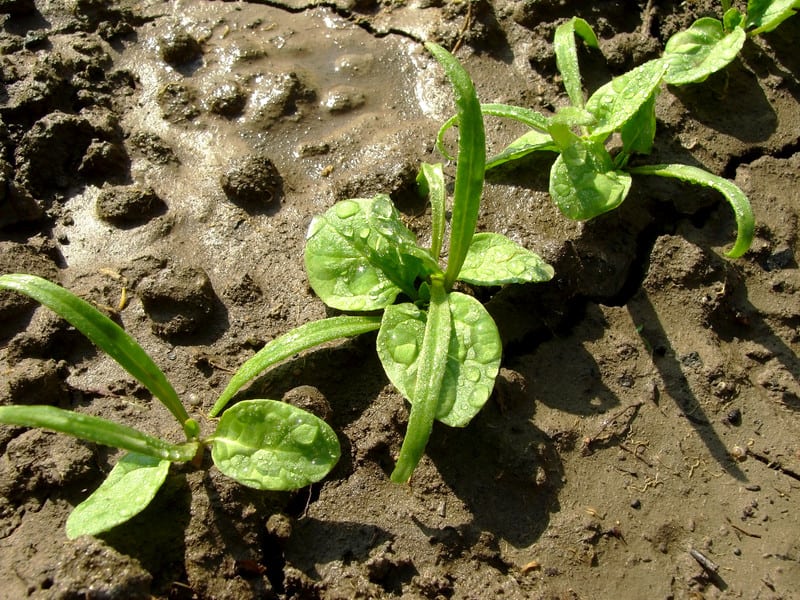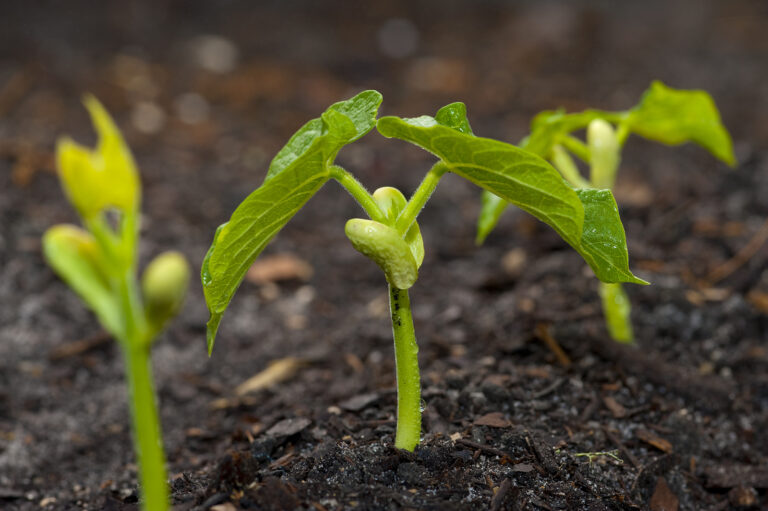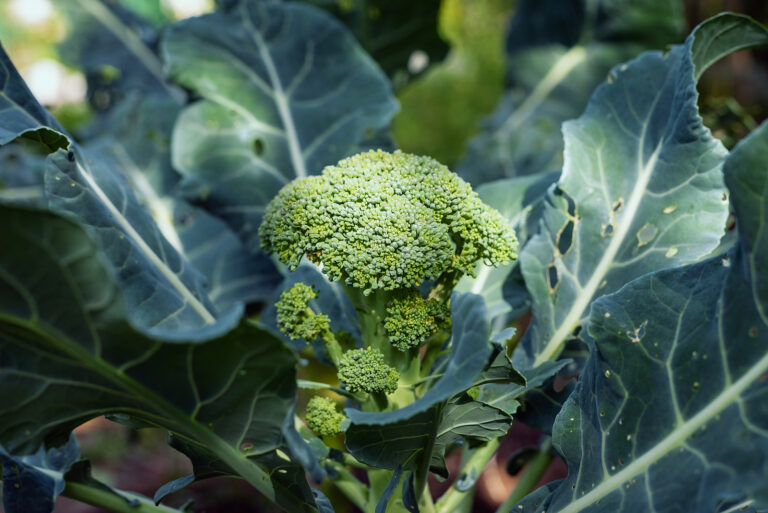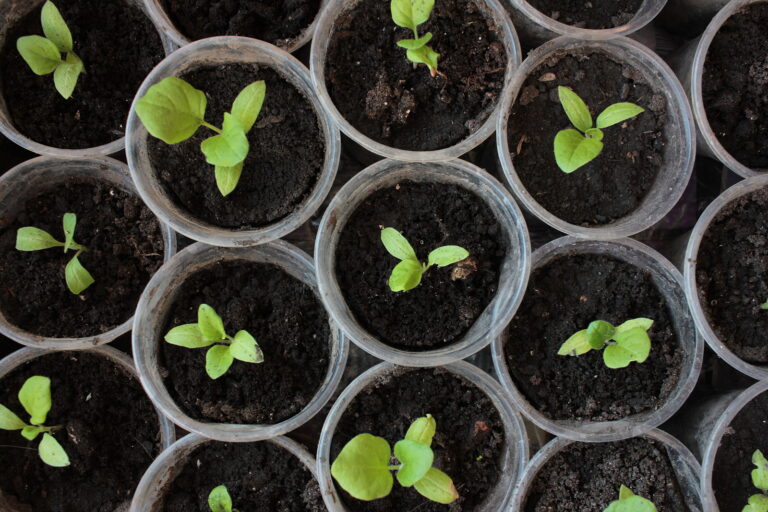Spinach Seed Starting Tips
Sow spinach seeds in the garden as soon as the ground is workable in spring. If you wait, warm weather and long days will trigger seed stalk formation and the leaves will become bitter tasting.
Spinach seeds will germinate in cool soil. Days at 60°F (16°C) and nights as low as 40°F (4°C) are warm enough for spinach.
Sow seeds directly in the garden 4 to 6 weeks before the last frost in spring. Start transplants indoors 4 to 6 weeks before setting them in the garden; transplants can go in the garden 3 to 6 weeks before the last frost.
Sow seeds for a fall harvest about 65 days before the first expected fall frost.
Spinach articles on Harvest to Table:
- How to Plant and Grow Spinach
- Spinach Seed Starting Tips
- How to Harvest and Store Spinach
- Spinach Growing Problems: Troubleshooting
- Six Ways to Cook and Serve Spinach
- How to Grow New Zealand Spinach
- How to Grow Malabar Spinach
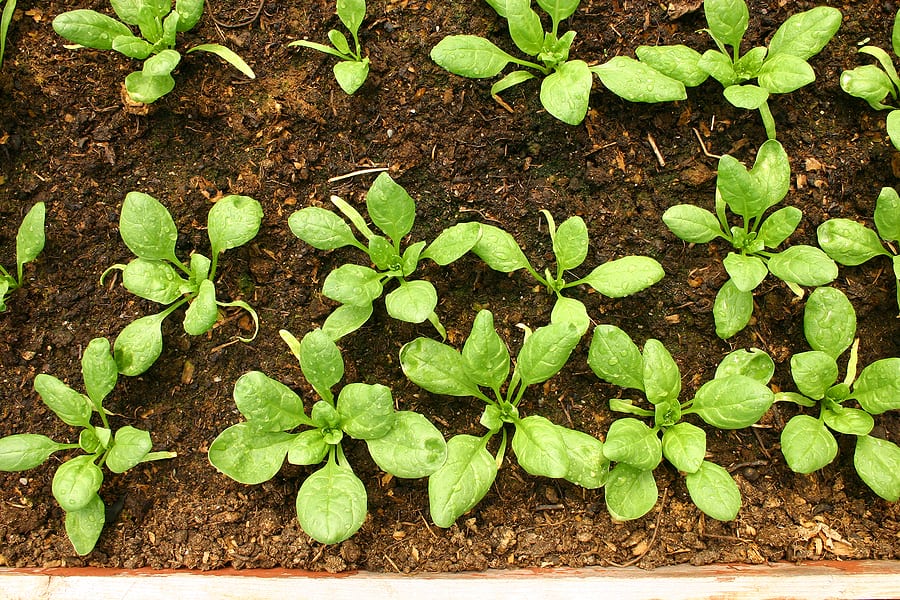
Spinach grows best in the cool weather of spring and fall. Mature spinach plants can tolerate temperatures as low as 10 to 20°F (-12 to -7°C).
Time spinach seed starting so plants come to harvest before or after the very warm and hot weather of summer. Hot weather will trigger bolting and seed-stalk formation. Bolting can be slowed by picking the oldest leaves first, but bolting ultimately can not be stopped if spinach matures in very warm weather.
Spinach matures in 35 to 50 days depending on the variety.
Spinach seed germination
Spinach seeds germinate in 7 to 14 days. You can speed germination by soaking seeds overnight in a dilute vinegar/water solution before sowing. Sow seeds at ½ inch deep.
Spinach will grow in a wide range of soils but will grow best in well-drained, sandy loam. Spinach wants full sun but will tolerate partial shade. Mulch around spinach with aged compost to keep the soil cool and moist; this will encourage good growth and stall bolting.

Spinach planting details
- Sowing depth: ½ inch (1.2 cm)
- Space between plants after thinning: 3-6 inches (7.5-15cm)
- Days to sprout: 7-14
- Days to harvest: 40-55
- Storage period: 1-2 weeks
- Seeds per 100-row feet: 2 ounces (28 grams)
- Yield per 100-row feet: 50 pounds
- Suggested varieties: Longstanding Bloomsdale, Popeye’s Choice, Nores, Packer, Marathon
Spinach seed starting and planting tips
- Spinach seed is viable for 3 years.
- Spinach is grown from seeds or transplants.
- Direct-sow spinach seeds in the garden 6 to 4 weeks before the last spring frost; spinach can be started indoors a couple of weeks earlier.
- Sow seed ½ inch (13mm) deep.
- Sow seeds 1 inch (2.5cm) apart; later thin seedlings to 6 inches (15cm) apart; use the thinnings in salads. Make sure there is good air circulation around seedlings and maturing plants to avoid disease.
- Space plants 6 to 9 inches (15-22 cm) apart in a staggered pattern or in rows 11 to 18 inches apart.
- Spinach grows best in full sun but can tolerate light shade.
- Spinach prefers a soil pH between 6.5 and 7.5.
- Seed germinates in 7 to 14 days at or near 70°F (21°C)—but sometimes seed can take up to 3 weeks to germinate in cold soil.
- When sowing seed in summer for fall harvest, first place the seed in a folded damp paper towel placed in a plastic bag and kept in the refrigerator for 5 days before sowing.
- Keep the soil evenly moist until seeds germinate then keep the soil moist until seedlings are well established; once plants are established mulch with straw to keep the roots cool and moist.
- Add aged compost to planting beds in advance of sowing; compost will feed the soil and aide moisture retention.
- Spinach grows best when daytime temperatures are in the 60s°F (mid- to high teens °C).
- Spinach can tolerate light frosts in the spring and freezes in the fall.
- Spinach planted in the fall can winter over under straw and a floating row cover and will begin new growth early in spring.
- Avoid planting spinach where beets, chard, or orach has recently grown. Plant spinach where beans have just grown if you can.
- Make successive sowings every few weeks for an extended harvest.
- Fertilize with an organic fertilizer such as fish emulsion at half strength.
- Aphids and leaf miners can attack spinach.
- Cut plants back to about 3 inches (7 cm) above the soil in late summer; the plant will produce new leaves for autumn harvest.
Interplanting: Interplant spinach with carrots, radishes, and strawberries.
Container Growing Spinach: Choose a container 4-6 inches (10-15 cm) deep.
Spinach planting calendar
Planting for late spring harvest:
- 10-12 weeks before the last frost in spring: direct sow in a plastic tunnel or cold frame for spring crop.
- 4-6 weeks before the last frost: direct-sow in the garden; minimum soil temperature is 35°
- Every 3 weeks until temperatures rise into the mid to high 70°sF plant succession crops.
Planting for fall and winter harvest:
- 6-8 weeks before the first frost in fall: direct-sow in the garden.
- 4-6 weeks before the first frost in fall: direct sow in a plastic tunnel or cold frame for fall and winter harvest.
- 4-5 weeks before the first frost in fall: direct sow in the garden to overwinter for early spring harvest; this crop should be covered with shredded leaves for straw and a floating row cover before freezing weather arrives; remove the cover and mulch in early spring to allow plants to continue growing.
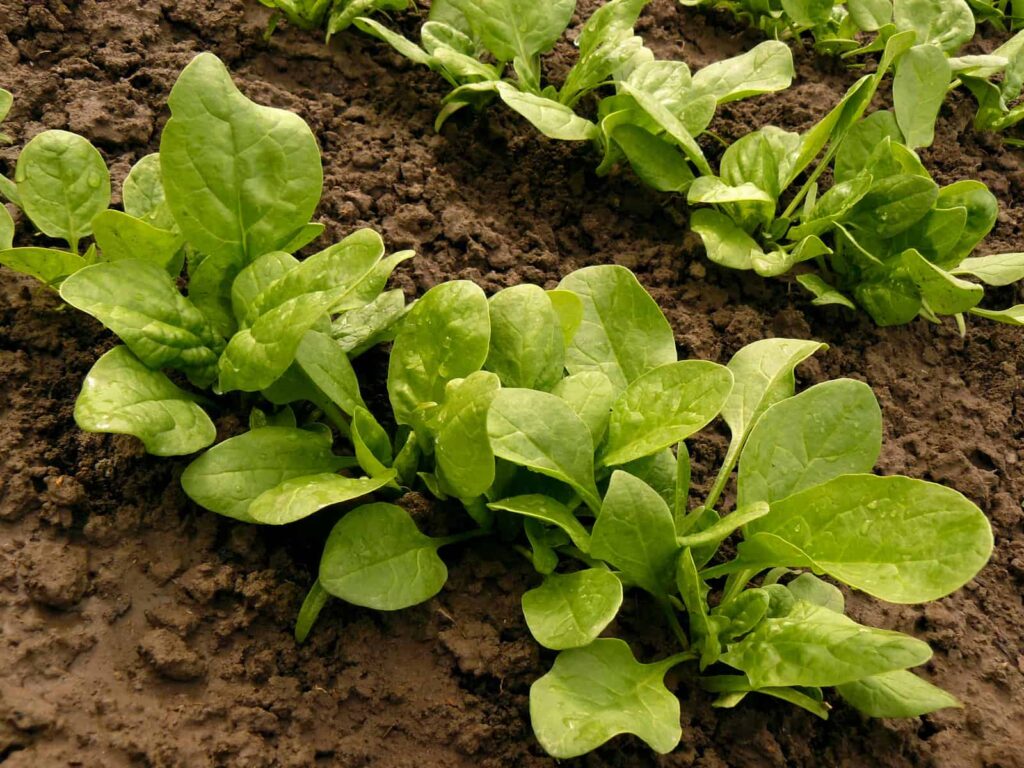
Spinach seed sowing dates
(These dates are for the Northern Hemisphere)
| Average date of the last frost | Planting dates |
| Jan. 30 | Jan. 1-Feb. 15 |
| Feb. 8 | Jan. 1-Feb. 15 |
| Feb. 18 | Jan. 1-Mar. 1 |
| Feb. 28 | Jan. 1-Mar. 1 |
| Mar. 10 | Jan. 15-Mar. 10 |
| Mar. 20 | Jan. 15-Mar. 15 |
| Mar. 30 | Feb. 1-Mar. 20 |
| Apr. 10 | Feb. 15-Apr. 1 |
| Apr. 20 | Mar. 1-Apr. 15 |
| Apr. 30 | Mar. 20-Apr. 20 |
| May 10 | Apr. 1-June 15 |
| May 20 | Apr. 10-June 15 |
| May 30 | Apr. 20-June 15 |
| June 10 | May 1-June 15 |

Spinach recommended varieties
Smooth leaf varieties:
- ‘Bordeaux’ green leaves with red veins, bolts easily in hot weather.
- ‘Olympia’ grows best in early spring.
- ‘Space’ is slow to bolt.
- ‘Whale’ is mildew and bolt resistant.
Semi-savoy and savoy leaf varieties:
- ‘Bloomsdale Longstanding’ thick and crinkled leaves.
- ‘Melody’ slow to bolt, crinkled leaves.
- ‘Tyee’ slow to bolt, crinkled leaves.
Botanical Name: Spinacia oeracea
Spinach belongs to the Chenopodiaceae family, other members include beets, chard, quinoa, and sugar beets.
Spinach Growing Hub
🌱 Start here: The Ultimate Spinach Growing Guide: From Seed to Harvest
🌿 Planting & Seasonal Growing
- Spinach Seed Starting Tips
- When to Plant Spinach for Spring, Fall, and Winter Gardens
- Zone-specific planting dates and tips for cool-season success.
- How to Grow Spinach as a Winter Crop: Tips for Cold Hardy Gardening
- Covers frost protection, cold frames, and season extension methods.
- Succession Planting Spinach for a Continuous Harvest
- How to space and time planting for steady fresh leaves.
- Container Growing Spinach: Best Practices for Small Spaces
- Soil, container size, watering, and feeding tips.
- Hot Weather Spinach Alternatives: Best Greens When Spinach Bolts
- List of spinach substitutes like Malabar spinach, New Zealand spinach, and more.
💧 Care & Maintenance
- How to Water Spinach Properly to Prevent Bolting and Leaf Damage
- Avoiding over- and under-watering issues.
- Feeding Spinach for Lush Leaf Growth: Fertilizer and Soil Tips
- Organic and mineral feeding strategies.
🐛 Pests & Diseases
- Common Spinach Pests and Diseases and Natural Control Methods
- Aphids, leaf miners, slugs, and flea beetles.
🧺 Harvest & Storage
- How and When to Harvest Spinach for the Best Flavor and Nutrition
- Cut-and-come-again technique, harvesting baby leaves vs mature.
- How to Harvest and Store and Spinach
- Step-by-step harvest and preservation methods.
🍽️ Spinach in the Kitchen
- Six Ways to Cook and Serve Spinach
- Fresh salads, sautés, smoothies, and more.
🌱 Varieties & Seed Saving
- Best Spinach Varieties to Grow for Flavor, Heat Tolerance, and Quick Growth
- Compare smooth leaf vs savoy vs semi-savoy types.
- How to Plant, Grow, and Harvest New Zealand Spinach
- Grow this warm weather alternative to regular spinach.
- How to Plant, Grow, and Harvest Malabar Spinach
- Here’s another warm weather alternative to regular spinach.
Spinach articles on Harvest to Table:
- How to Plant and Grow Spinach
- Spinach Seed Starting Tips
- How to Harvest and Store Spinach
- Spinach Growing Problems: Troubleshooting
- Six Ways to Cook and Serve Spinach
- How to Grow New Zealand Spinach
- How to Grow Malabar Spinach
Garden Planning Books at Amazon:

